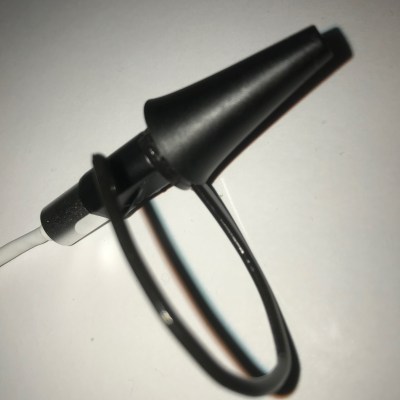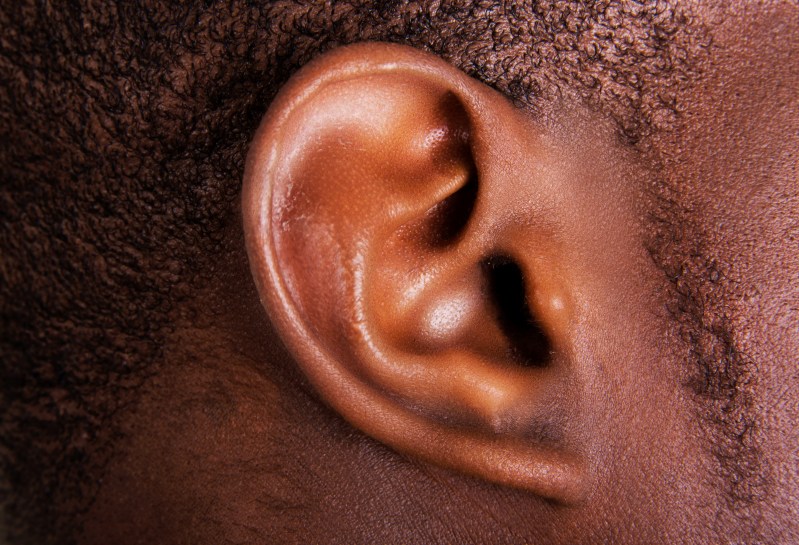Assistive technology is extremely fertile ground for hackers to make a difference, because of the unique requirements of each user and the high costs of commercial solutions. [Nick] has been working on Earswitch, an innovative assistive tech switch that can be actuated using voluntary movement of the middle ear muscle.
 Most people don’t know they can contract their middle ear muscle, technically called the tensor tympani, but will recognise it as a rumbling sound or muffling effect of your hearing when yawning or tightly closing eyes. Its function is actually to protect your hearing from loud sounds screaming or chewing. [Nick] ran a survey and found that 75% can consciously contract the tensor tympani and 17% of can do it in isolation from other movements. Using a cheap USB auroscope (an ear camera like the one [Jenny] reviewed in November), he was able to detect the movement using iSpy, an open source software package meant for video surveillance. The output from iSpy is used to control Grid3, a commercial assistive technology software package. [Nick] also envisions the technology being used as a control interface for consumer electronics via earphones.
Most people don’t know they can contract their middle ear muscle, technically called the tensor tympani, but will recognise it as a rumbling sound or muffling effect of your hearing when yawning or tightly closing eyes. Its function is actually to protect your hearing from loud sounds screaming or chewing. [Nick] ran a survey and found that 75% can consciously contract the tensor tympani and 17% of can do it in isolation from other movements. Using a cheap USB auroscope (an ear camera like the one [Jenny] reviewed in November), he was able to detect the movement using iSpy, an open source software package meant for video surveillance. The output from iSpy is used to control Grid3, a commercial assistive technology software package. [Nick] also envisions the technology being used as a control interface for consumer electronics via earphones.
With the proof of concept done, [Nick] is looking at ways to make the tech more practical to actually use, possibly with a CMOS camera module inside a standard noise canceling headphones. Simpler optical sensors like reflectance or time-of-flight are also options being investigated. If you have suggestions for or possible use case, drop by on the project page.
Assistive tech always makes for interesting hacks. We recently saw a robotic arm that helps people feed themselves, and the 2017 Hackaday Prize has an entire stage that was focused on assistive technology.
















Wow!
And I thought wiggling my ears was all I could do with them!
Unfortunately though, for me this muscle movement isn’t always voluntary. For instance, when I yawn it happens without me trying. Furthermore, there are many people who just straight up don’t have the ability to move this muscle.
Just like most assistive technologies, it’s not meant for everyone.
I’ve got full control on the right side, and partial control on the left.
That can be an advantage, such as “chording” mouse buttons.
I haven’t tried too hard (yet) to achieve individual control.
Would be an awesome way to control a bluetooth headset.
Double ear wiggle to skip a track!
How interesting.
I’ve been practicing using these muscles for 20+yrs but never really have known what they were, just that I could squeeze something that dulled sounds. I use them to protect my hearing when working on machinery or when listening to loud music (concerts, etc).
They do take practice to use and hold tight, like any muscle they need training.
So that is the muscle was trying to find the name a few years ago with little luck. I can control pretty well i try to tie into my whistling for a beat(more like a wind on a miceophone sound) but the muscle does get a little tired if I rumble it countinously for more then a minute.
mice-o-phone?
B^)
“Microphone” but miceophone would have similar issues? ;)
How well can you hear with both ears plugged with these things?
My thought is that it’ll probably be used in one ear as an on/off switch for assistive technology.
However, the future potential is to have it as a standard function in all smart earphones & hearing aids as a general consumer interface. So it wouldn’t be any different from wearing 2 earphones etc
TECH-NOL-GY
In addition to having some control over my tensor tympani, I can also “wiggle my ears” (I think those muscles are called auricular muscles). My control over both of these sets of muscles is apparently quite primitive, as I didn’t even realize they are different sets of muscles. It feels like I am activating one or both sets of muscles involuntarily when I wear earbuds, in an effort to “hold them in” my ears. I think I end up fatiguing one or both sets of muscles when this happens. Now that I know about both sets of muscles, I am going at least try to learn to control them independently.
Have a look at Reddit; EarRumblersAssemble — where you will find over 90,000 fellow Ear Rumblers!